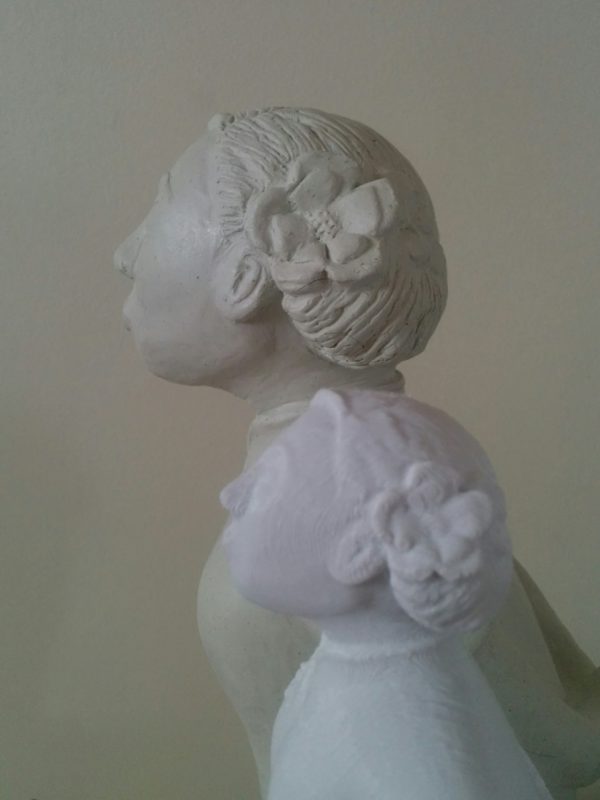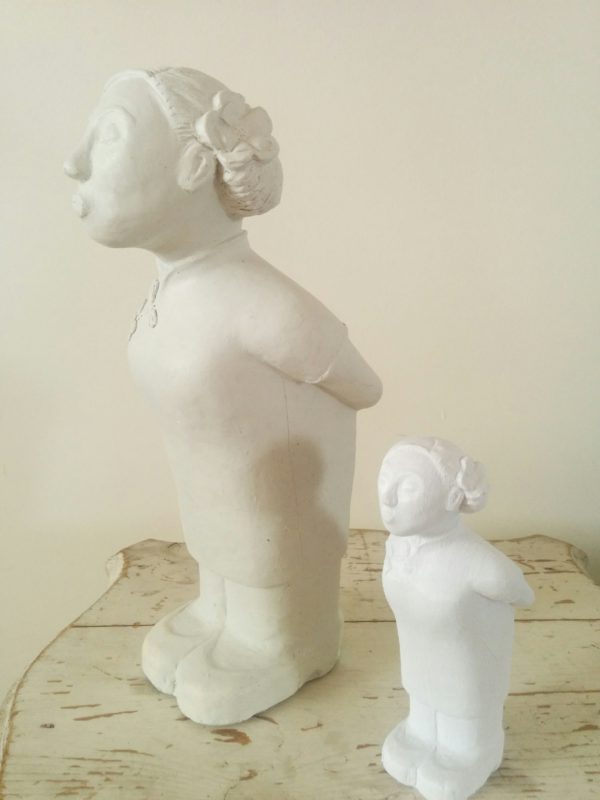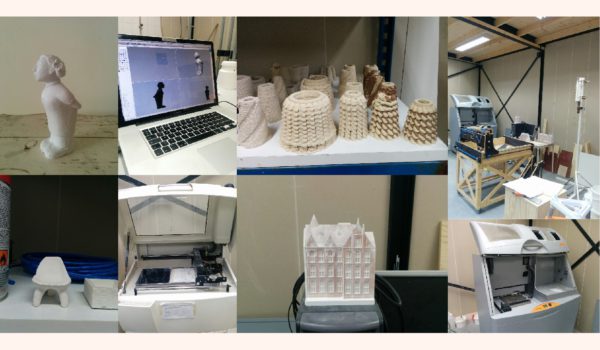In the past few weeks I continued with my quest to search for production alternatives of plaster molds to make the kissing couples in The Netherlands. The purpose is to reduce initial production costs as much as possible. I already mentioned in another post, how challenging it is to achieve this because of labor costs in NL.
I had some hope to be able to reduce costs by CNC milling the plaster molds for slip casting. Many people had already told me that this was not possible, mainly because of risk of damage to their machines, or because of the complexity of the molds.
I can be a bit stubborn while searching for alternatives and I needed to find a professional who could offer me the opportunity to brainstorm and explore other possibilities. I decided to go back to EKWC (European Ceramics Center). EKWC is a place that embraces design challenges in ceramics. I’ve been there a few times talking to experts like Peter Oltheten who is one of the most knowledgeable professionals about ceramics in the Netherlands.
This time I made an appointment with Sander Alblas, who is running the Fablab at EKWC and is very experienced in experimenting with ceramics and new technology. During our meeting we explored the idea of CNC milling the molds in plaster. At the Fablab it is possible to mill plaster, but Sander explained that because of the complexity of the molds ( 4 to 5 pieces) plus the time it would take to mill them, the initial costs would become very high, which doesn’t help my goal to lower the initial costs for production.
Other options we explored were 3D scanning to design the mother mold digitally, 3D print it and use this to make the plaster molds. We also explored the possible costs to 3D print the pieces in services like Shapeways or i,Materlialise and make plaster molds from these pieces. To conclude, all ideas lead to having to make molds on plaster for each piece. The plaster mold production has been a bottle neck for this project, because I need 20 of them and are very costly to produce. This is a financial risk that I can’t afford.
Following Sanders suggestion I explored the possibility to ask students from the ceramics school to make the molds for me as a client, but normally these type of requests need to be planned and it is almost the end of the school year.
So now what?
During my second visit to EKWC, Sander offered to make a 3D print of the Chinese kissing lady which he had already 3D scanned. The main purpose would be to see how it would look in a smaller size and the level of detail that could be delivered with the technology he has at hand.
And here she is!
I am very happy with the result. It is not perfect, the texture is very rough, but I like it. I would like to make a plaster mold of it and slip-cast her like this in porcelain.
All this journey has brought me to adventure myself into making more complex molds. For this I already subscribed to a course in (Dutch Molds) to learn how to make them and prepare them for slip casting.
Do some tests and see how things go from there.
Some pictures of the Fablab-EKWC



